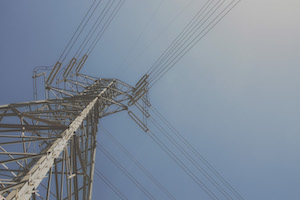Keystone oil pipeline shutdown could quickly lead to higher gasoline prices
BISMARCK, N.D. — The nearly 2,700-mile Keystone oil pipeline was shut down Tuesday morning after it ruptured in North Dakota, halting the flow of millions of gallons of crude oil from Canada to refineries in the U.S. and potentially leading to higher gasoline prices.
South Bow, a liquid pipeline business that manages the pipeline, said it shut down the pipeline after control center leak detection systems detected a pressure drop in the system. The spill is confined to an agricultural field in a rural area, about 60 miles southwest of Fargo.
“The affected segment has been isolated, and operations and containment resources have been mobilized to site,” the company said. “Our primary focus right now is the safety of on-site personnel and mitigating risk to the environment.”
The pipeline transported an average 624,000 barrels — or more than 26 million gallons — per day in 2024, according to Canadian regulators. It stretches 2,689 miles from Alberta, Canada, to Texas.
The pipeline’s shutdown could quickly lead to higher gasoline prices in the Midwest, said Ramanan Krishnamoorti, vice president for energy and innovation at the University of Houston.
It will raise prices at the pump likely within one or two days, but will have a greater impact on diesel and jet fuel, Krishnamoorti said. The Keystone pipeline transports a large amount of a unique, heavy crude that only is available from limited sources, he said.
“The refineries run on blends of crude so that they can get the product line that they want to deliver, whether it is gasoline, diesel, jet fuel, etc., and not having the supply of heavy crude is going to tilt their ability to make diesel and jet fuel,” he said. “They will make less of diesel and jet fuel when they have less of the heavy crude.”
Higher diesel costs could lead to grocery price increases because diesel trucks transport those products, he said.
The lead petroleum analyst at gasoline price tracker GasBuddy, Patrick De Haan, said that typically refineries have at least a few days supply of crude oil on hand that will help insulate them from immediate impacts from the shut down. But if the pipeline is shut for more than a few days or a week it could become problematic.
He said some refineries in the Great Lakes region are also served by other pipelines run by Enbridge.
It wasn't clear what caused the rupture of the underground pipeline or the amount of crude oil released into the field. An employee working at the site near Fort Ransom heard a “mechanical bang” and shut down the pipeline within about two minutes, said Bill Suess, spill investigation program manager with the North Dakota Department of Environmental Quality.
Oil surfaced about 300 yards south of a pump station in a field and emergency personnel responded, Suess said.
No people or structures were affected by the spill, he said. A nearby stream that only flows during part of the year was not affected but was blocked off and isolated as a precaution, he said. The Pipelines and Hazardous Materials Safety Administration is sending a team to investigate the cause of the leak.
Fort Ransom, a city of less than 100 people, is in a hilly, forested area of southeastern North Dakota known for scenic views and outdoor recreation. A state park and hiking trails are nearby.
It's unclear at what rate the 30-inch pipeline was flowing, but even at two minutes “it's going to have a fairly good volume,” Suess said. “But ... we’ve had much, much bigger spills,” including one involving the same pipeline a few years ago in Walsh County, N.D., he said.
“I don’t think it's going to be that huge,” Suess said.
The Keystone Pipeline was constructed in 2010 at a cost of $5.2 billion and carries crude oil across Saskatchewan and Manitoba through North Dakota, South Dakota, Nebraska, Kansas and Missouri to refineries in Illinois, Oklahoma and Texas. Though the pipeline was constructed by TC Energy, it is now managed by South Bow as of 2024.
A proposed extension to the pipeline called Keystone XL would have transported crude oil to refineries on the Gulf Coast, but it was ultimately abandoned by the company in 2021 after years of protests from environmental activists and Indigenous communities over environmental concerns.
After a spill, the Pipeline and Hazardous Materials Safety Administration is responsible for investigating the root cause of the issue and any lack of compliance. The agency, which regulates liquid and natural gas pipelines, lost several senior-level executives earlier this year as part of President Donald Trump's federal cuts.
PHMSA did not immediately respond to a request for comment.
Bill Caram, executive director at industry watchdog Pipeline Safety Trust, said the organization already was “an under-resourced, underfunded agency.”
“To lose anyone will have an impact on safety,” he said.
After the last major Keystone pipeline spill in Kansas in December 2022, sections of the pipeline was offline for a little over three weeks before it resumed operating at a lower pressure.
That spill of nearly 13,000 barrels of oil flowed into a creek traversing a pasture. An engineering consulting firm said the bend in the pipeline at the site had been “overstressed” since being installed in 2010, likely because of construction activity altering the land around the pipe. TC Energy said a faulty weld in the line's bend caused a crack that exacerbated over time.
The Pipeline Safety Trust said this latest leak adds to the troubled history of the Keystone pipeline, which has had 13 significant incidents in the 15 years it has been operating.












